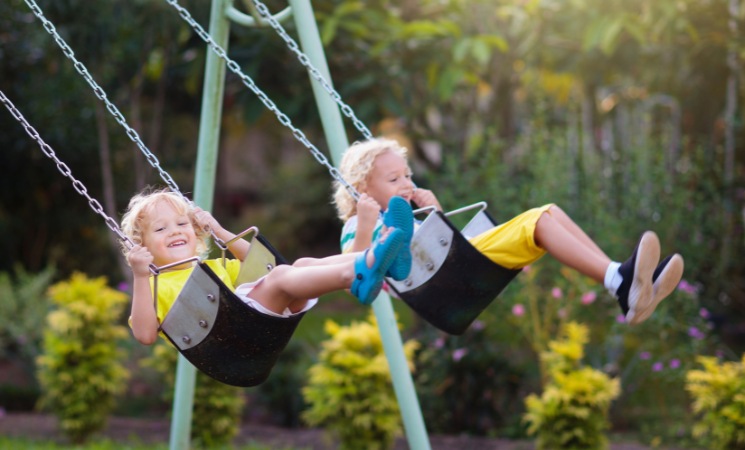Playgrounds are magical places where kids burn off energy, make new friends, and let their imaginations run wild. Among all the playground equipment, swings have stood the test of time as a childhood favorite. There’s something about that back-and-forth motion – the rush of air, the feeling of weightlessness – that never gets old.
If you’re looking to add swings to a playground or just curious about why kids love them so much, this guide covers everything from their benefits to choosing the best options.
Why Kids Love Swings
Think back to your childhood – chances are, some of your best playground memories involve swinging as high as possible, trying to touch the sky. Swings for kids aren’t just fun, they offer a mix of thrill and relaxation. One minute, a child is soaring like a superhero, the next, they’re swaying gently, lost in thought.
The Hidden Benefits of Swinging
Sure, swings are entertaining, but they also help kids develop important skills:
- Motor skills & coordination – Pumping their legs to go higher builds strength and teaches body control.
- Balance & spatial awareness – Kids learn how to shift their weight and adjust their movements.
- Sensory benefits – The rhythmic motion can be calming, especially for children with sensory processing challenges.
- Social skills – Swings may seem like solo play, but kids often take turns, push each other, or make up games together.
Types of Swings to Consider
Swings have come a long way from the simple wooden plank and rope design. Today, there are so many choices, each offering a unique experience:
- Belt swings – The classic, flexible seat that works for most kids.
- Bucket swings – Designed for toddlers with extra support to keep them secure.
- Tire swings – Perfect for multiple kids who want to swing together.
- Nest swings – A large, disc-shaped swing that allows kids to sit or lie down.
- Adaptive swings – Specially designed for children with disabilities to ensure inclusivity.
What to Look for When Choosing Swings
If you’re picking out swings for a playground or backyard, keep these factors in mind:
- Safety first – Look for sturdy materials and secure fastenings.
- Age appropriateness – Toddlers need high-backed seats with harnesses, while older kids prefer more freedom.
- Durability – Weather-resistant materials like galvanized steel or heavy-duty plastic last longer outdoors.
- Space considerations – Ensure enough room between swings to prevent collisions.
Swing Safety: What Parents and Caregivers Should Know
Swings are fun, but they can also be risky if not properly installed or maintained. Here are a few safety tips:
- Use a soft landing surface – Grass, rubber mulch, or sand can reduce injuries from falls.
- Check for wear and tear – Inspect chains, seats, and fasteners regularly.
- Teach safe swinging habits – Kids should sit properly, hold on tight, and avoid jumping off mid-swing.
More Than Just Play: The Power of Swinging
Swings are more than just playground equipment – they’re tools for creativity and imagination. Kids pretend they’re flying through space, escaping on a magical journey, or floating above the ocean. This kind of imaginative play is crucial for cognitive development.
And let’s be honest – adults love swings too! There’s something about the simple back-and-forth motion that brings a sense of peace. It’s a reminder of childhood joy, carefree summer days, and the simple pleasure of feeling the wind rush past.
Final Thoughts
Swings have been a playground staple for generations, and for good reason. They offer excitement, relaxation, and countless developmental benefits. Whether you’re designing a playground or just reminiscing about your own childhood adventures, one thing is clear – swings will always be a timeless favorite.
So, the next time you see a swing set, why not hop on and relive the magic?













